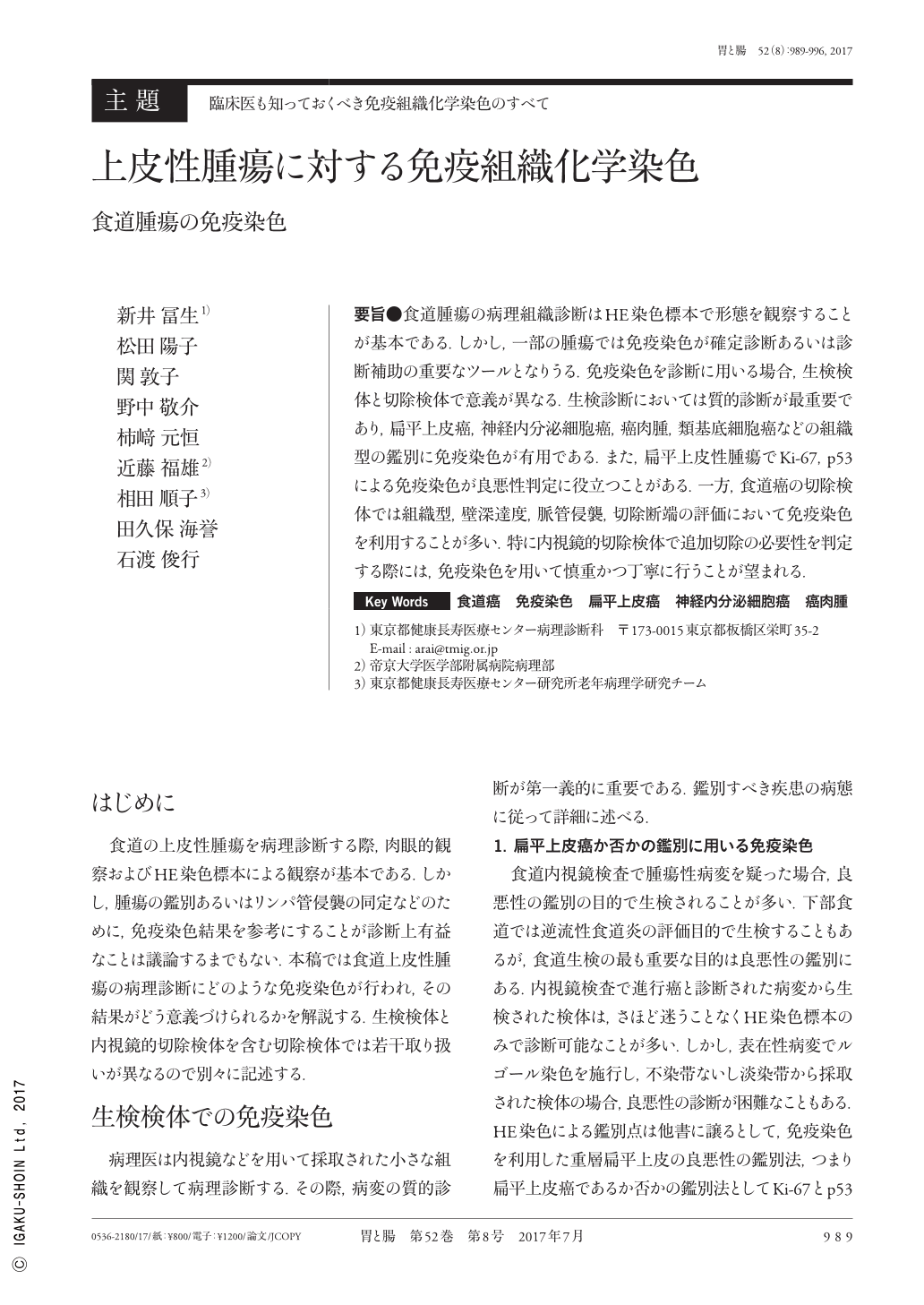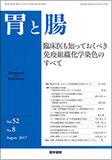Japanese
English
- 有料閲覧
- Abstract 文献概要
- 1ページ目 Look Inside
- 参考文献 Reference
要旨●食道腫瘍の病理組織診断はHE染色標本で形態を観察することが基本である.しかし,一部の腫瘍では免疫染色が確定診断あるいは診断補助の重要なツールとなりうる.免疫染色を診断に用いる場合,生検検体と切除検体で意義が異なる.生検診断においては質的診断が最重要であり,扁平上皮癌,神経内分泌細胞癌,癌肉腫,類基底細胞癌などの組織型の鑑別に免疫染色が有用である.また,扁平上皮性腫瘍でKi-67,p53による免疫染色が良悪性判定に役立つことがある.一方,食道癌の切除検体では組織型,壁深達度,脈管侵襲,切除断端の評価において免疫染色を利用することが多い.特に内視鏡的切除検体で追加切除の必要性を判定する際には,免疫染色を用いて慎重かつ丁寧に行うことが望まれる.
Pathological diagnosis of esophageal epithelial tumors is based on the observation of the tumor's histological morphology using hematoxylin-eosin staining. However, IHC(immunohistochemistry)has often been used for the differential diagnosis of the tumor. The significance of IHC performed on biopsy specimens differs from that of IHC performed on resected specimens. In a biopsy specimen, it is very important to assess whether the lesion is malignant. In addition, IHC is useful for the differential diagnosis of the histological subtypes of the tumor, such as squamous cell carcinoma, neuroendocrine carcinoma, carcinosarcoma, basaloid squamous carcinoma, adenoid cystic carcinoma, and malignant melanoma. In a resected specimen, IHC is preferentially performed for the diagnosis of the histological subtypes of the tumor, depth of tumor invasion, and vessel invasion. In particular, IHC should be performed to examine endoscopically resected specimens to determine additional treatment.

Copyright © 2017, Igaku-Shoin Ltd. All rights reserved.


